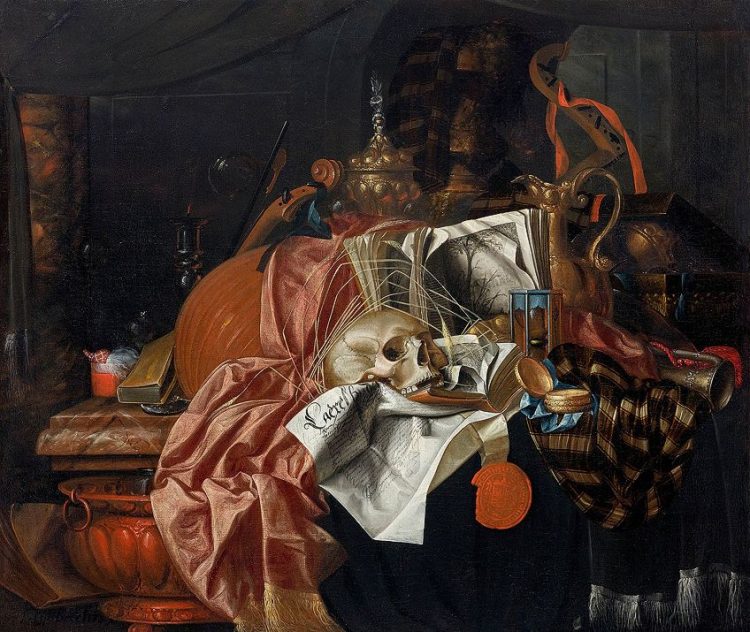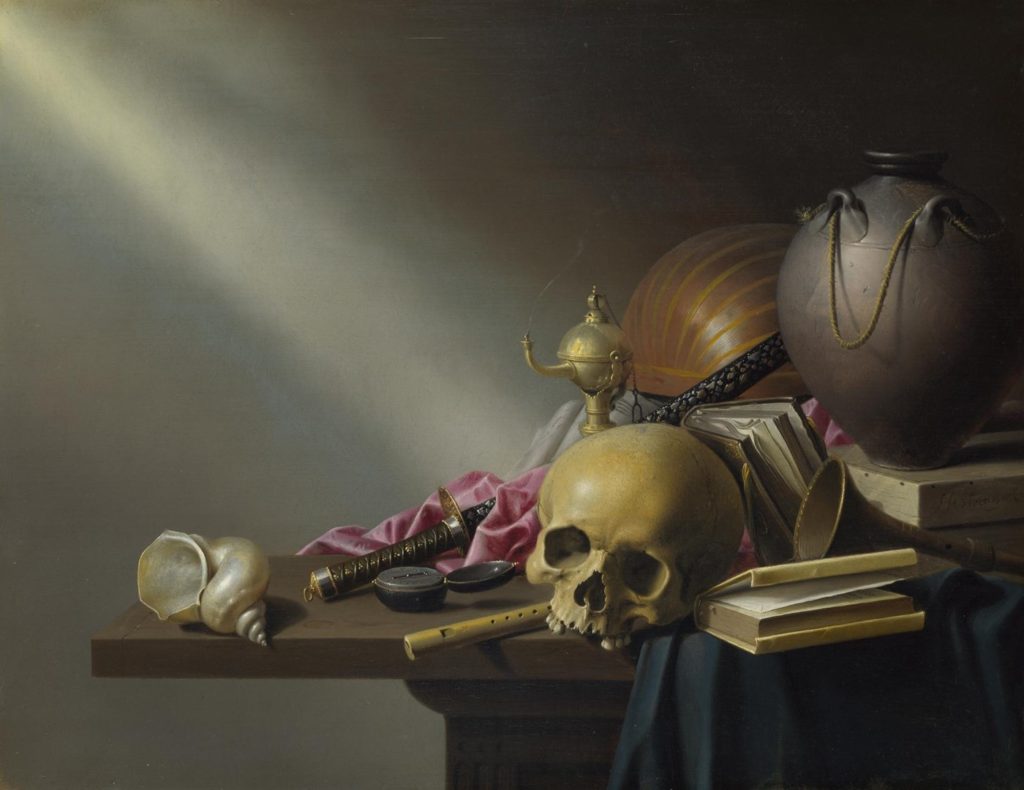Still life is a genre of art that depicts common and usually inanimate objects, both natural and man-made, within a work of art, the style beginning with a Netherlandish painting of the 16th and 17th centuries.
Still life artists choose and arrange objects such as fruit, wine, utensils, skulls, flowers etc to their liking before painting their unique composition, having full creative freedom over the colour palette, ambience and size of the painting. The objects within each painting often allude to something bigger, creating a deeper meaning within each piece, usually related to religion and life, [i.e: skulls represent mortality, candles represent the passing of time etc] making each piece compelling to look at. This is referred to as ‘Vanitas’ and is used to remind the viewer of their own mortality through the different symbolic objects within each painting, showing how pointless and meaningless each object is without the value placed upon it.



Still life became popular with photographers in the early 20th century, causing a lot art photographers to emerge [such as Baron de Meyer who took soft-focus images to be taken, allowing his photos to look like drawings] which allowed 2 different styles of still life photography to develop over the years: ‘found still life’ and ‘created still life’. Found still life photography would include taking images of places/objects as they are whilst created still life photography involves organising everything in frame until the desired composition is found and photographed.

A famous still life photographer whose work links with the Vanitas style is Guido Mocafico, an Italian photographer with a unique and intriguing style. His work tends to use a lot of snakes but he has taken an array of images that are composed in the Vanitas style, especially in his series ‘Nature Morte’. It is clear in his work that Mocafico carefully plans his compositions, ensuring each object is carefully placed and balanced to his liking which also allows the softer lighting to accentuate parts of his compositions, causing the shadows to overpower most of the image without underexposing it. Mocafico also has an interesting use of colours as he his images look as though they’ve been tea-bagged due to the different beige-tan shades he uses, however, he tends to add a pop of colour by adding 1 or two vibrant objects which definitely enhances the image as a whole.


One of the most famous still life photographers is American photographer Olivia Parker [born in 1941]. Her work looks very similar to paintings due to the techniques she uses to photograph each object. Her use of shallow focus allows her close-ups to really stand out against the backgrounds. In her more recent photoshoots, the colours are rich in saturation due to her use of light, making the objects within each image look artificial and unreal.


